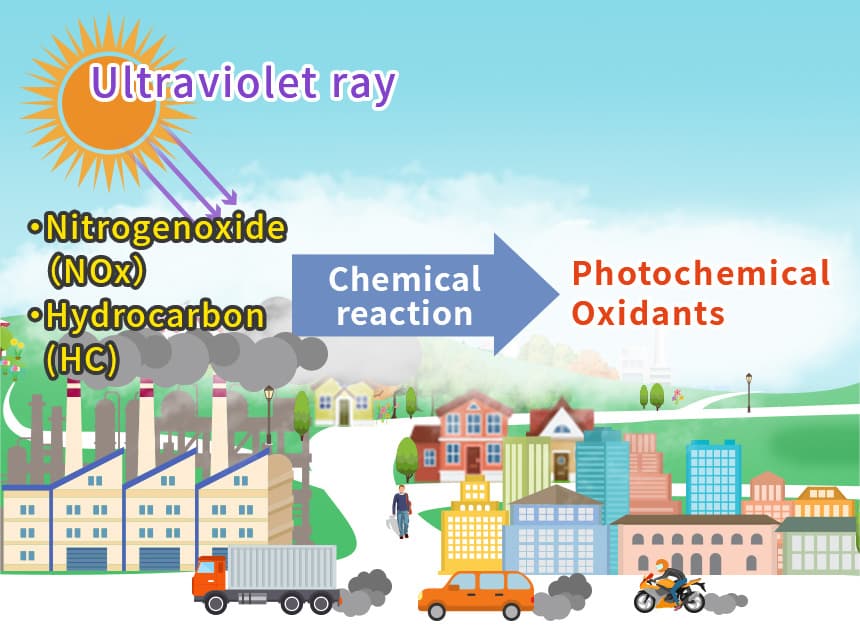Photochemical smog
When nitrogen oxides (NOx) from automobiles and factories, and hydrocarbons (HC) contained in liquids such as gasoline and thinner, are exposed to strong ultraviolet rays in the sunlight, a photochemical reaction occurs, resulting in a new substance called a photochemical oxidant. When the density of HC and NOx in the atmosphere is high and ultraviolet rays are strong, the air containing photochemical oxidants looks white and hazy. This phenomenon is called "photochemical smog," and when the density of the smog becomes high, it can cause harmful effects on humans and plants. As for the effects on human bodies, symptoms concerning the membranes of the eyes and throat, including eye irritation, sore throats, and wheezing, have been reported.



 JAPANESE
JAPANESE

 Select Language
Select Language English
English